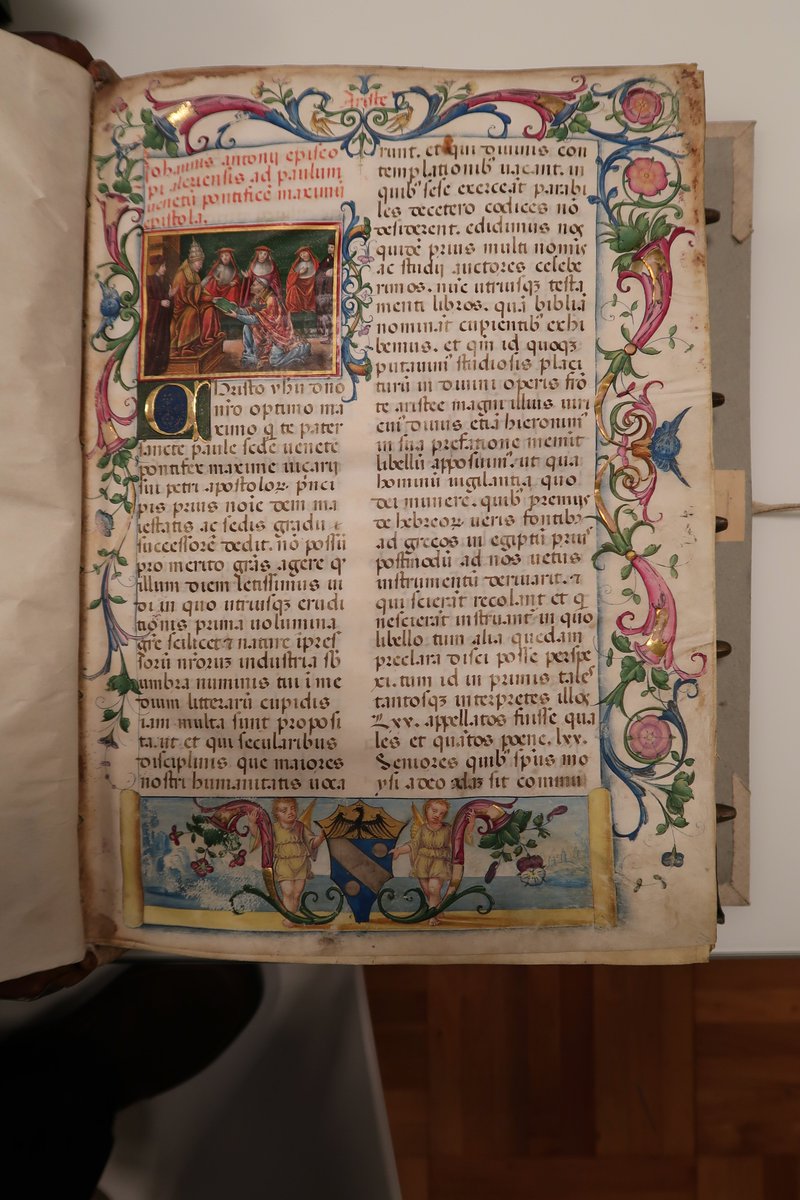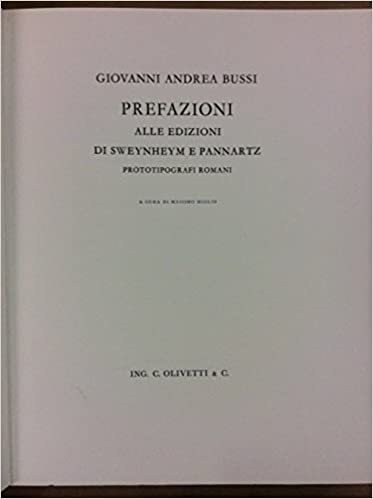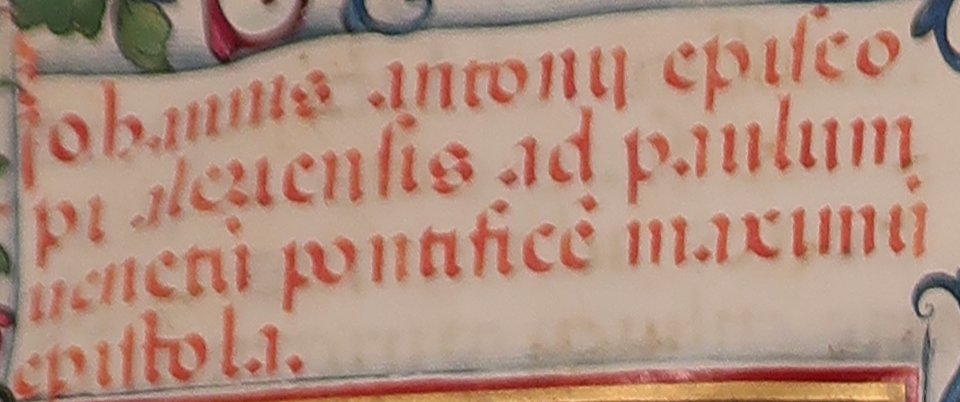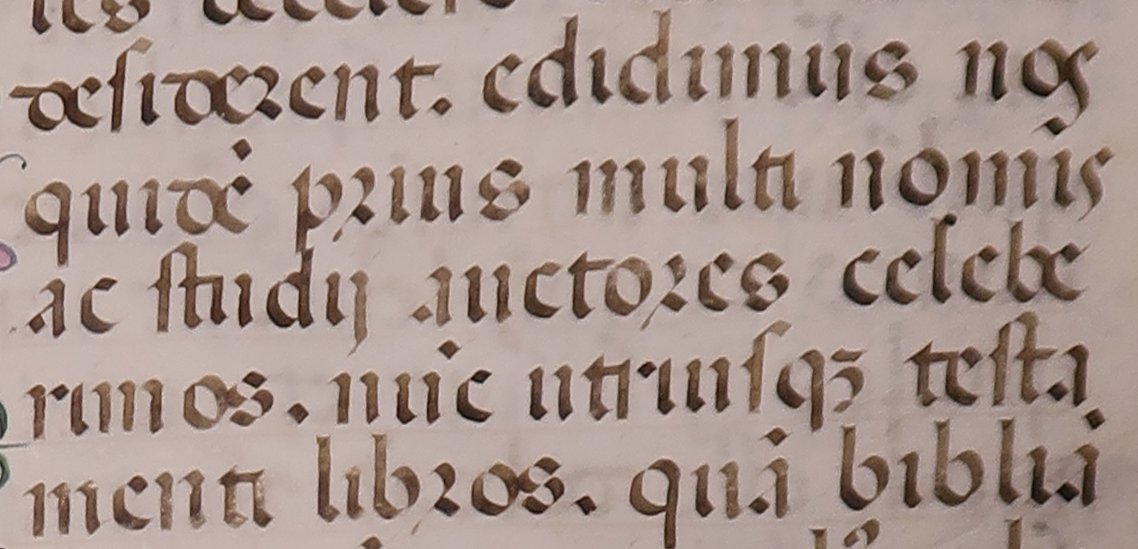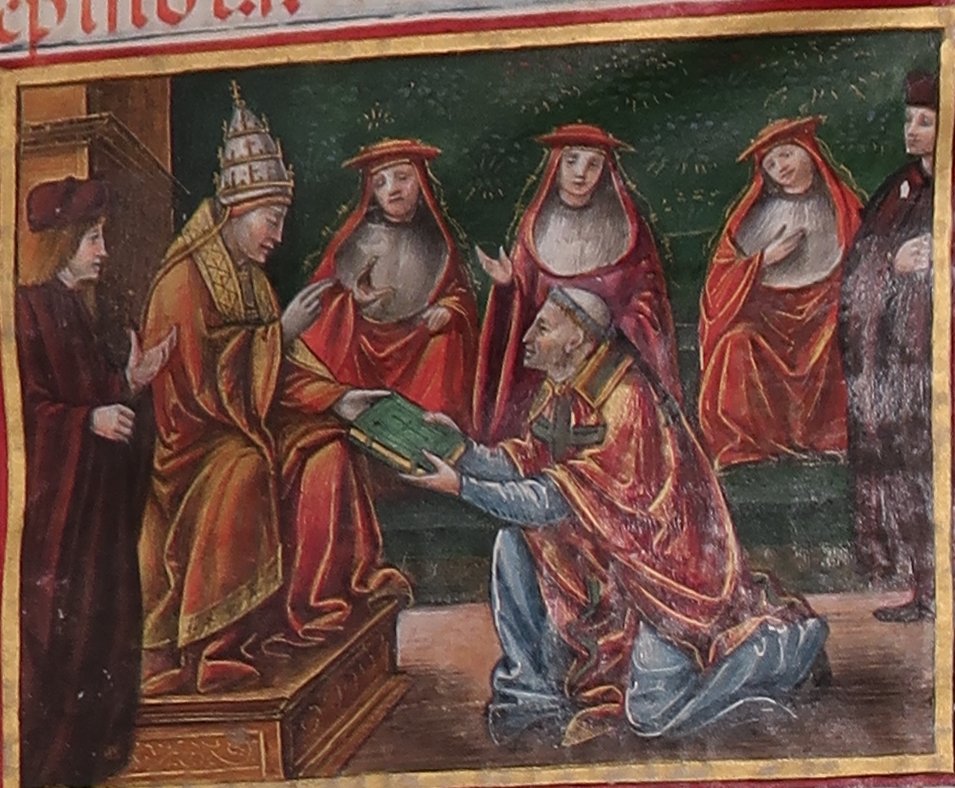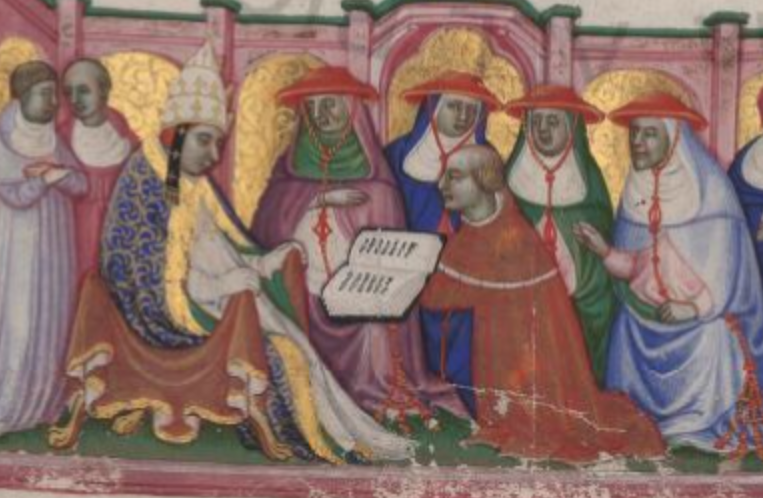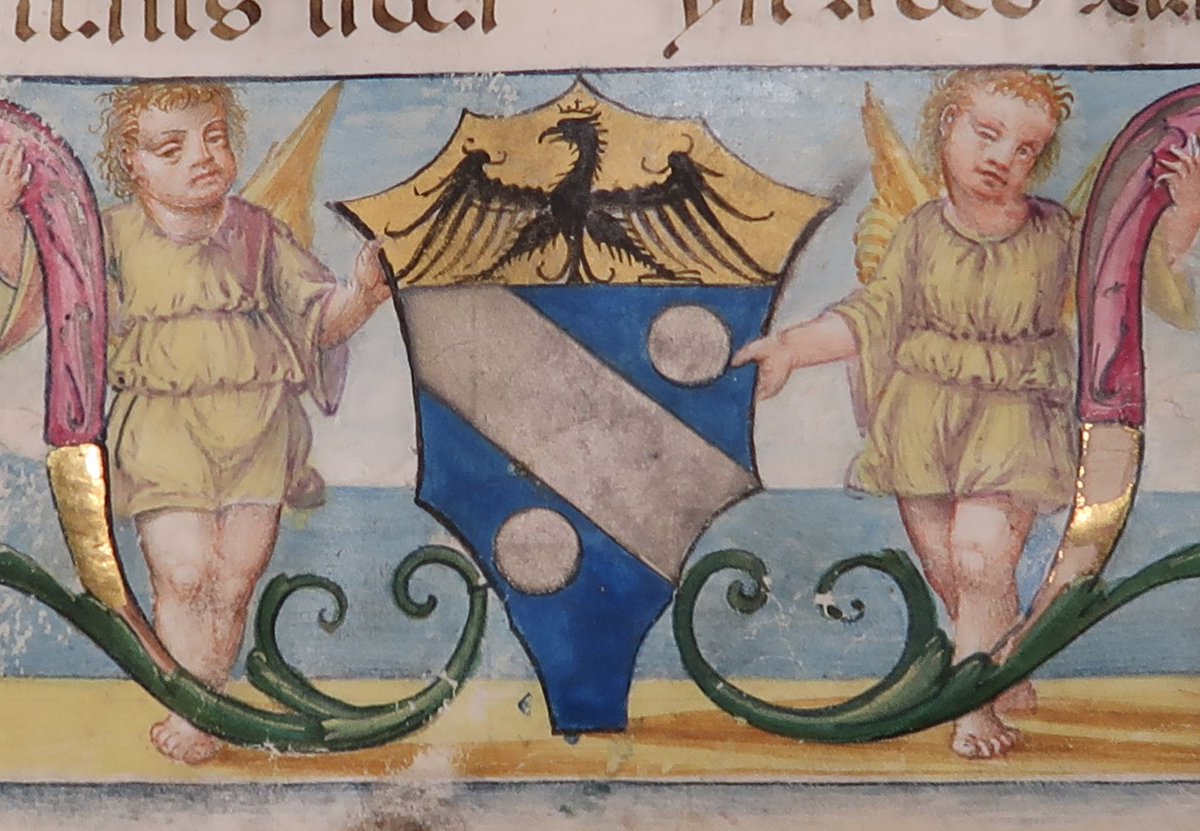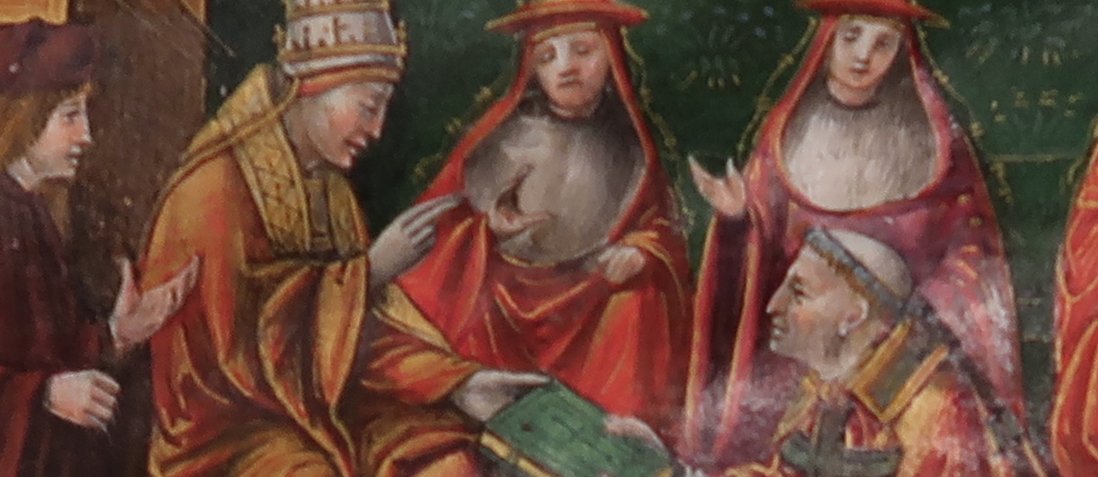No more Bartolomeo Platina! Now we get to move on to a document that I'm still trying to figure out, quite simply because it's so beautiful and tantalizing. It's also VERY complicated for me! Meet "M44" in the Archivio Capitolare della Basilica di Sant'Ambrogio, in Milan - BT
I discovered this page as part of the image collection in an edited volume I use for my research. It pops up as "Tavola 30" in the collected prefaces of Giovanni Andrea Bussi, bishop/humanist in Rome, c. 1468-1472. However, there's a more than a few problems to think about -BT
It's from 1507; the prefaces "end" in 1472, Bussi dies in 1475. This document was made in and currently is in Milan; Bussi left the Milanese state in 1440s and rarely went back. The font is "medieval"; Bussi was "humanist" (this is not actually a problem... )-BT
All these concerns are negotiable, but the W's of the form (who/what/where/when/why) and the content don't immediately add up. I wish I had access to the rest of the book, but I got this photo through a kind ask from @FlaBruni, and I haven't seen it in person. So, let's begin -BT
The text is the preface to the Latin Bible by Giovanni Bussi, pub. 1471 in Rome in 2 vols (ITSC ib00535000). It's written as a letter (an epistola) from Giovanni Andrea Bussi, here with his father's name Antonii, and sent/dedicated to Pope Paul II -BT
The preface itself continues onto the next page as well. Bussi supplicates to the Pope (in a dedication? Shocker!) while also taking care to ground his praise in promoting humanist thought too: "We printed for you many celebrated authors, now we do the Bible". He's marketing -BT
But what excited me the most for this version of the preface (it's a printed book; there are others) is the depiction at the very top. Look! It's Bussi gifting the book to the Pope! Could this possibly be summarizing my work? How to think about this? Art history came in -BT
As pointed out by @Sonja_Drimmer, @DrDavidRundle, @TheMedievalDrK, et al, there is a LONG history of author portraits in manuscripts. I can't even assume that this is SEMI-realistic; an article by Dr. Drimmer and Dr. @Yael_Rice points this out too: https://hyperallergic.com/604897/how-scientists-use-and-abuse-portraiture/ -BT
This MS dates from 1507; Bussi died in 1475. Research/notes indicate that this is an exemplary MS, made from a printed version, for Pietro Casola, a Catholic canon at St. Ambrogio in Milan, and given a benefice from Pope Paul II. His emblem is at the bottom of the page -BT
This document, with all of its tricks, tells us nothing about Giovanni Bussi (though it's a "portrait" of him), and much more about book culture at the turn of the 16th c. This is an exemplary book model, handwritten during the "age" of print, and based on a printed book! -BT
I still want to somehow use this image of "Giovanni Bussi" as as evidence somewhere, and somehow. But as a historian, I (and we) need to be careful with using images in our work. Art historians have been doing this for longer, and they do it better: I'm a beginner at this -BT
There's a whole 15th c cultural trope of exchange, honour culture, and gifting being depicted here - Baxandall would suggest looking at the cardinals' hands too! But reconciling the image with the preface it precedes won't be easy; I'm nowhere near the end of this analysis -BT
There's no story being told by this thread, just a deep dive into what appears to be more questions. The TL;DR is realizing that art from the past isn't photorealistic, and that even the simplest of documents (a page of a preface) can be very, very complicated to study -BT
RE: this thread, to quote a friend, sometimes training the historical imagination is good exercise in and of itself. Historians need to do better justice regarding historical images.

 Read on Twitter
Read on Twitter